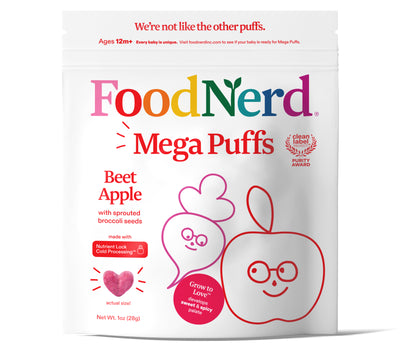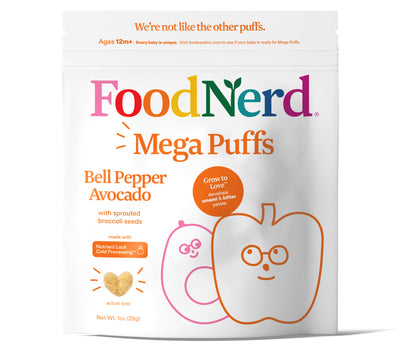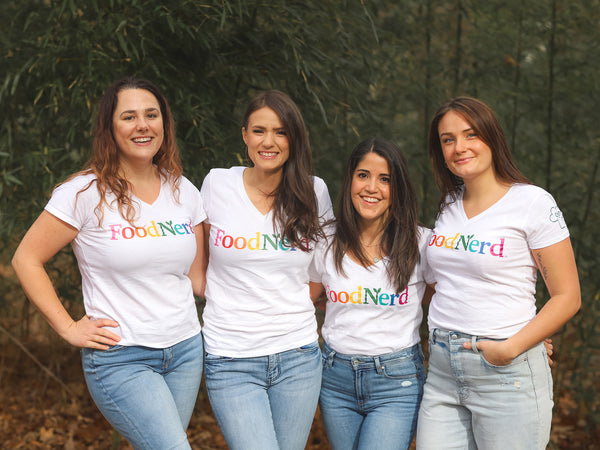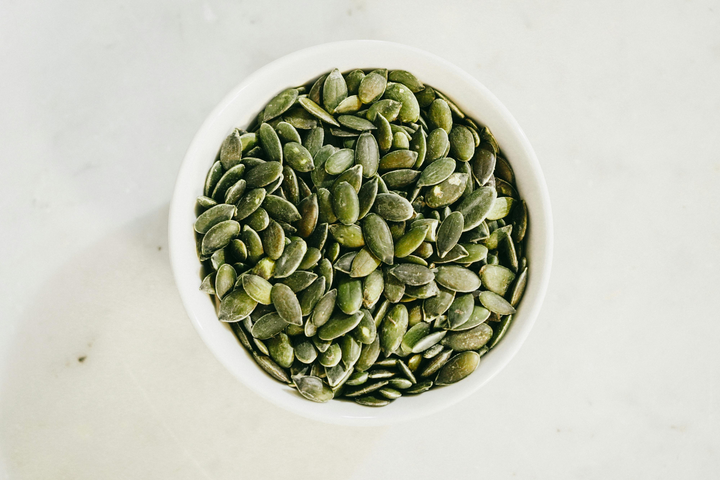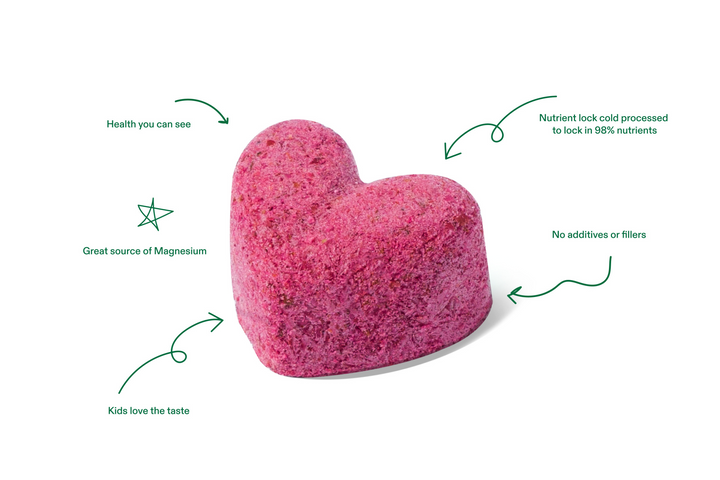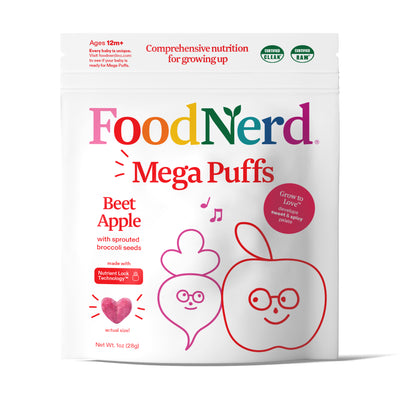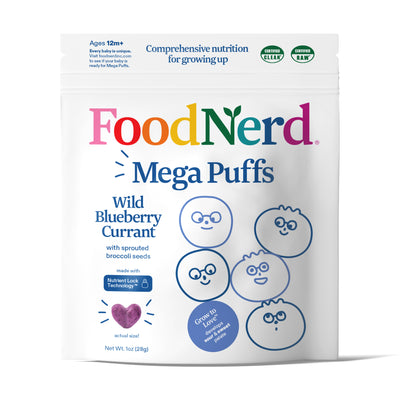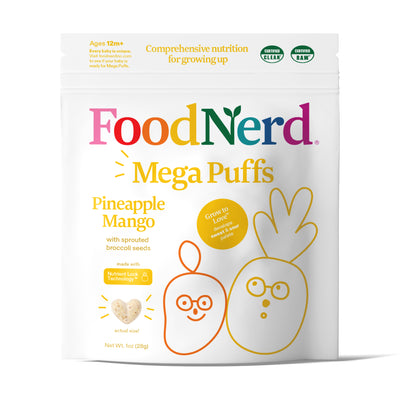Superfoods for kids are more than just sources of energy for your little one - their nutrients help support bone health, brain function, immune system, and gut health.
However, nearly half of American children don’t meet the basic dietary guidelines and aren’t getting these essential nutrients (1). Especially for picky eaters, finding superfoods they’ll actually enjoy is key to helping them meet their nutritional needs.
Today, let’s cover how to identify a superfood, top superfoods for kids, and tips for serving them in ways that picky eaters will love.
What Makes a Food “Super”?
While “superfood” isn’t a scientific term, it generally refers to food that is especially high in nutrients. They pack huge amounts of vitamins, minerals, fiber, protein, or healthy fats into a small serving.
Most superfoods are whole or minimally processed, like fruits, vegetables, nuts, and seeds. Not something you'll find in pill or powder form! Despite the hype, superfoods don’t have to be a trendy or expensive supplement.
The best superfoods are often simple and accessible options found in the produce aisle or in your pantry.
Top Superfoods for Kids
1. Berries
Raspberries, blackberries, strawberries, and blueberries are rich in antioxidants that help strengthen the immune system and support brain development. They're also among the highest-fiber fruits - perfect for the 95% of kids who aren’t getting enough fiber in their diets (2).
2. Sweet Potatoes
Sweet potatoes are rich in beta-carotene, which the body converts into vitamin A to support vision and immune function. They also provide complex carbohydrates for lasting energy and fiber for digestive health.
3. Quinoa
Quinoa is a complete plant-based protein, meaning it contains all nine essential amino acids - great for growing kids! It’s also high in fiber, iron, and magnesium, making it a great substitute for rice or pasta.
4. Edamame
Edamame are young soybeans packed with plant-based protein and iron—two nutrients that many kids need more of. They’re also fun to eat and make a great snack or lunchbox addition.
5. Avocado
Avocado is one of the easiest healthy fats to add to your kid’s meals! It’s packed with unsaturated fats, which are heart-healthy and a good source of extra calories. Plus, it’s also high in fiber for digestive support.
6. Lentils
Lentils are tiny powerhouses full of protein, iron, and fiber. They're a budget-friendly and versatile option to boost nutrition in soups, pasta sauces, or even taco fillings.
7. Chia Seeds and Flax Seeds
Seeds are the perfect “topping” to add to yogurt parfaits, cereal, oatmeal, pasta, and more! Not only do they contribute to your kid’s daily fiber goal, but they are an excellent source of omega-3 fatty acids.
8. Leafy Greens
Spinach, kale, arugula, collard greens, and cabbage are packed with vitamin A, vitamin K, and fiber. Plus, their one of the best non-meat sources of iron.
9. Chickpeas
Chickpeas are a great source of plant-based protein, fiber, and important minerals like iron and zinc. Roast them for a crunchy snack or blend them into hummus for a dip kids love.
10. Oats
Oats are a great source of whole grains that are packed with fiber for a blood sugar-friendly carbohydrate option. Plus, they’re high in essential B-vitamins for energy and digestion support.

Tips for Serving Superfoods to Picky Eaters
Superfoods are often the hardest foods for picky eaters to accept, but they’re also the most beneficial, since even small amounts can deliver a big nutritional boost.
Here are some simple ways to make them more appealing to selective eaters.
Blend Them Up!
Instead of offering these foods whole, try blending them into smoothies, savory pasta sauces, or tangy dips. This helps picky eaters avoid textural issues while slowly introducing them to new flavors.
Pair with a Favorite Food
Instead of offering brand-new foods by themselves, pair the superfoods with a preferred or favorite food. For example, sprinkling hemp seeds onto their mac and cheese or baking oats into a sweet treat.
Get Your Kids Involved
Picky eaters are much more likely to try new foods if they had a part in preparing them. Kids inherently love independence and responsibility, so letting them measure ingredients or chop some produce is a great way to get them interested in superfoods.
Plus, with extremely picky eaters who have textural sensitivities, exposing them to new foods through touch (aka cooking) is a great first step.
Focus on Food Novelty
Focusing on a fun or playful element of food helps give picky eaters some internal motivation to interact with it. Using fun-shaped plates, colored toothpicks, or cupcake liners as mini bowls can be a great way to introduce superfoods.

Superfood Snack Combinations
- Berry Yogurt Parfait: Layers of Greek yogurt, mixed berries, and a sprinkle of chia seeds or flaxseeds.
- Mini Sweet Potato Nachos: Baked sweet potato rounds topped with mashed avocado and black beans or lentils..
- Edamame & Fruit Bento Box: A handful of shelled edamame with sliced strawberries and whole grain crackers.
- Oat & Berry Energy Balls: No-bake bites made with oats, nut butter, chia seeds, and freeze-dried berries
- Green Smoothie Popsicles: Spinach, banana, and mango blended with Greek yogurt and frozen into popsicle molds.
The Bottom Line
Rather than expensive supplements and powders, superfoods are nutrient-dense whole food options that give kids the nutrients they need to thrive. Try incorporating at least one of these superfood options into each of your kid’s meals to support their growth, development, and overall health.
-
Liu, J., Micha, R., Li, Y., & Mozaffarian, D. (2021). Trends in Food Sources and Diet Quality Among US Children and Adults, 2003-2018. JAMA network open, 4(4), e215262. https://doi.org/10.1001/jamanetworkopen.2021.5262
-
Kranz, S., Brauchla, M., Slavin, J. L., & Miller, K. B. (2012). What do we know about dietary fiber intake in children and health? The effects of fiber intake on constipation, obesity, and diabetes in children. Advances in nutrition (Bethesda, Md.), 3(1), 47–53. https://doi.org/10.3945/an.111.001362


